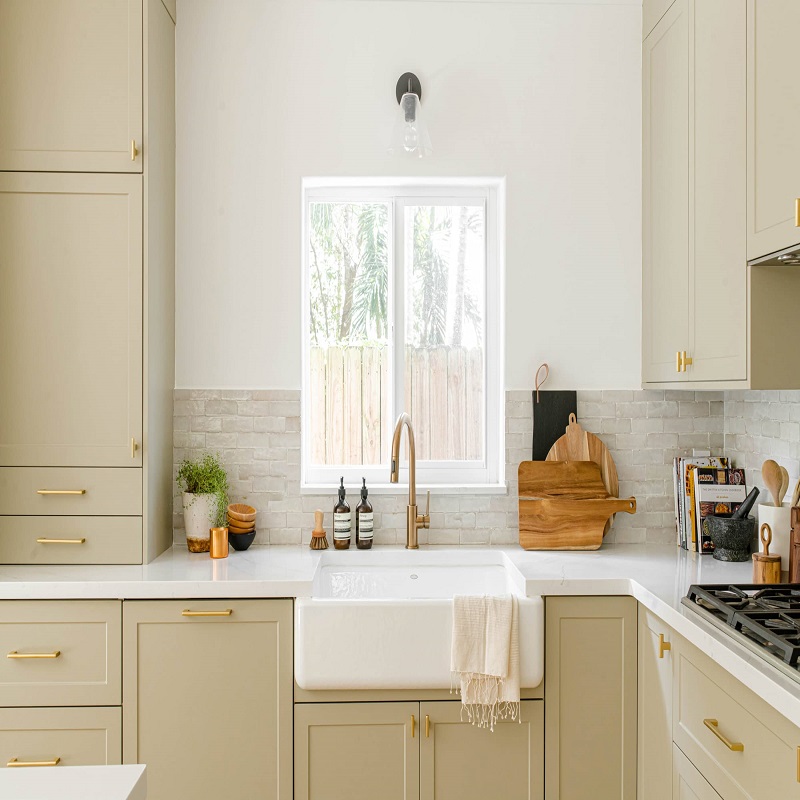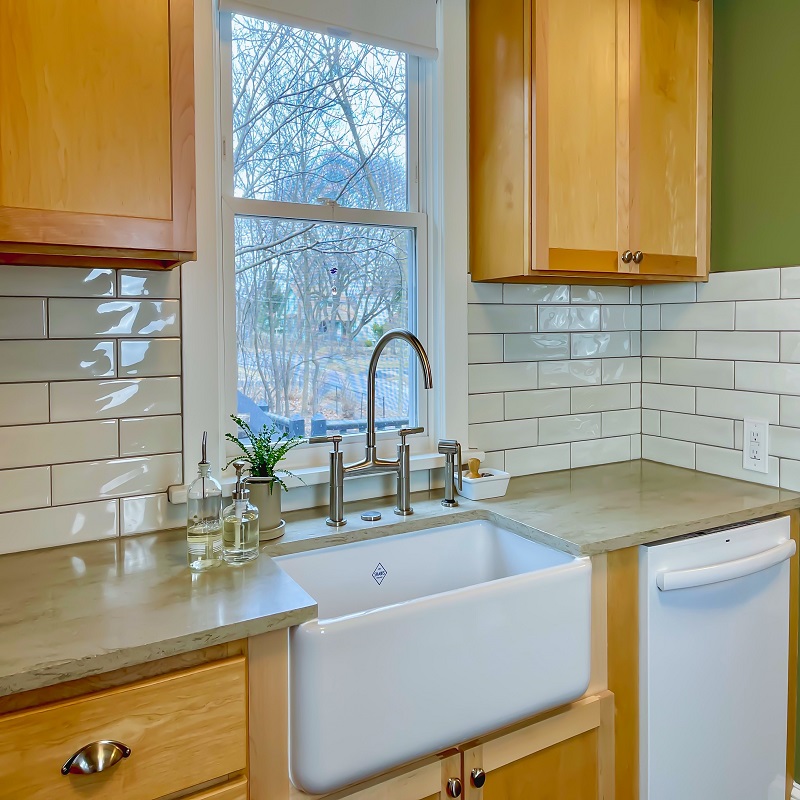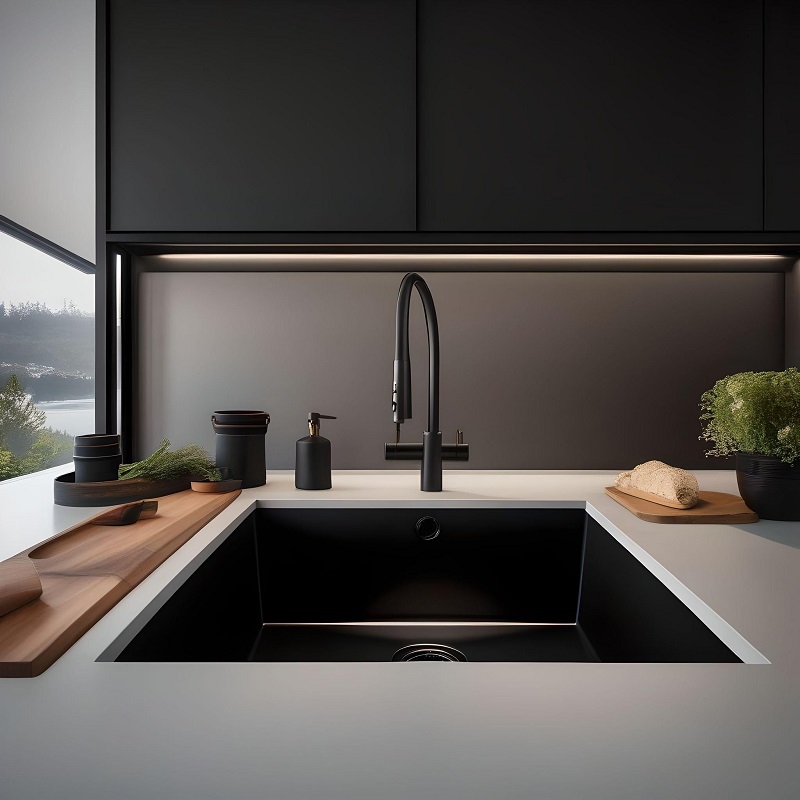How to clean your kitchen sink drain? Keeping your kitchen sink drain clean is important for maintaining a hygienic and pleasant working environment in your kitchen. Over time, kitchen sink drains can become clogged with food particles, grease, and other debris, leading to unpleasant odors and potentially causing plumbing issues. Fortunately, there are several methods for cleaning your kitchen sink drain that can help to keep it clear and odor-free. In this article, we will discuss some effective techniques for cleaning your kitchen sink drain, as well as tips for preventing clogs in the future.

Removing Debris by Hand
One of the simplest and most effective ways to clean your kitchen sink drain is to remove any visible debris by hand. Start by removing the stopper or drain cover, if applicable, and using a pair of gloves to reach into the drain and pull out any food particles, hair, or other debris that may be causing a blockage. It’s important to be thorough in this process, as even small bits of debris can contribute to a clog over time.
Using Baking Soda and Vinegar
Another popular method for cleaning kitchen sink drains is to use a combination of baking soda and vinegar. This natural, non-toxic solution can help to break down grease and other substances that may be clogging the drain. To use this method, start by pouring a pot of boiling water down the drain to help loosen any built-up debris. Next, pour 1/2 cup of baking soda into the drain, followed by 1/2 cup of vinegar. Allow the mixture to sit for a few minutes, and then flush the drain with another pot of boiling water. This can be repeated as needed to help keep the drain clear and fresh-smelling.
Using a Plunger
If you have a stubborn clog in your kitchen sink drain, a plunger can be a useful tool for dislodging it. To use a plunger on a sink drain, start by removing any standing water from the sink and placing the plunger over the drain. Then, use quick, firm plunging motions to try to dislodge the clog. This may take a few attempts, but if successful, the water in the sink should start to drain properly again.
Using a Drain Snake
For particularly stubborn clogs, a drain snake, also known as a plumber’s auger, can be used to physically break up and remove the blockage. This tool consists of a long, flexible metal cable with a coiled end that can be pushed down the drain to reach the clog. Once the drain snake is inserted into the drain, it can be rotated and pushed further into the pipe to dislodge and remove the debris causing the blockage. It’s important to use a drain snake carefully, as excessive force can cause damage to the pipes.
Preventing Future Clogs
In addition to regular cleaning and maintenance, there are several steps you can take to help prevent clogs in your kitchen sink drain in the future. One of the most important is to avoid pouring grease or oil down the drain, as these substances can solidify and cause blockages. Instead, pour grease into a container and dispose of it in the trash once it has solidified. Additionally, using a sink strainer can help to catch food particles and other debris before they can enter the drain and cause a blockage.

What are the styles of kitchen sinks?
The kitchen sink is not only a functional part of the kitchen, but it is also a design element that can enhance the overall aesthetic. There are several different styles of kitchen sinks, each offering its own unique features and benefits.
Undermount Sinks
Undermount sinks are installed beneath the countertop, creating a seamless look. This style is popular for modern and minimalist kitchens, as it provides a clean and sleek appearance. Undermount sinks are available in various materials, including stainless steel, granite, and porcelain, offering a wide range of design options.
Top Mount Sinks
Top mount sinks, also known as drop-in sinks, are installed on top of the countertop. This style is the most common type of kitchen sink and is suitable for all kitchen designs. Top mount sinks are easy to install and replace, making them a practical choice for many homeowners.
Farmhouse Sinks
Farmhouse sinks, also called apron-front sinks, are characterized by their exposed front panel, which extends slightly beyond the edge of the countertop. This style of sink is popular for its traditional and rustic charm, making it a perfect choice for country-style kitchens. Farmhouse sinks are typically made of fireclay or porcelain, adding a vintage appeal to the kitchen.
Double Basin Sinks
Double basin sinks feature two separate compartments, allowing for multitasking and easy dishwashing. This style of sink is practical for households with a busy kitchen, as it provides separate spaces for washing and rinsing. Double kitchen sink are available in various materials and configurations to suit different kitchen layouts.
Single Basin Sinks
Single basin sinks have one large basin without a divider, making them ideal for washing large pots and pans. This style of sink is versatile and can be installed in kitchens of all sizes. Single basin sinks are available in different shapes, such as rectangular, square, and circular, offering flexibility in design.
Bar Sinks
Bar sinks are small, secondary sinks typically installed in kitchen islands or wet bars. This style of sink is designed for convenience when preparing drinks or entertaining guests. Bar sinks are available in various shapes and materials, making them a stylish addition to any kitchen space.

Advantages of kitchen sinks
Functionality
One of the most obvious advantages of a kitchen sink is its functionality. It provides a convenient space for washing dishes. rinsing fruits and vegetables, and even filling up pots and pans with water. The deep basin of a kitchen sink allows for ample space to clean larger items, and the faucet provides a steady stream of water for easy use. Additionally, many modern kitchen sinks come with additional features. Such as detachable sprayers and touchless technology, making the process of using a kitchen sink even more convenient.
Organization
Having a kitchen sink in your home can help to keep the kitchen more organized. Dirty dishes can be placed into the sink rather than left on the counter or table. Preventing clutter in the kitchen. This enhances the overall appearance of the kitchen and makes it a more pleasant and functional space. Additionally, with the addition of a drying rack or a garbage disposal. The kitchen sink can be a one-stop station for all things related to cleaning and organizing.
Hygiene
A kitchen sink plays an important role in maintaining hygiene in the kitchen. It allows for easy and efficient cleaning of dishes, utensils, and cookware. This helps to prevent the build-up of bacteria and germs. That can occur when dirty dishes are left sitting around the kitchen. Additionally, the availability of running water in the kitchen sink sprayer allows for quick. And thorough hand washing, promoting good hygiene practices for the entire household.
Conclusion
Maintaining a clean and clear kitchen sink drain is an important part of keeping your kitchen functional and hygienic. By using the techniques and tips outlined in this article, you can keep your kitchen sink drain free of clogs and odors. Ensuring that it continues to work properly for years to come. Regular cleaning and maintenance, along with careful disposal of grease and food debris, can help to prevent clogs. And keep your kitchen sink drain in top condition. By taking the time to care for your kitchen sink drain. You can avoid the inconvenience and expense of dealing with a clogged or damaged drain in the future.

